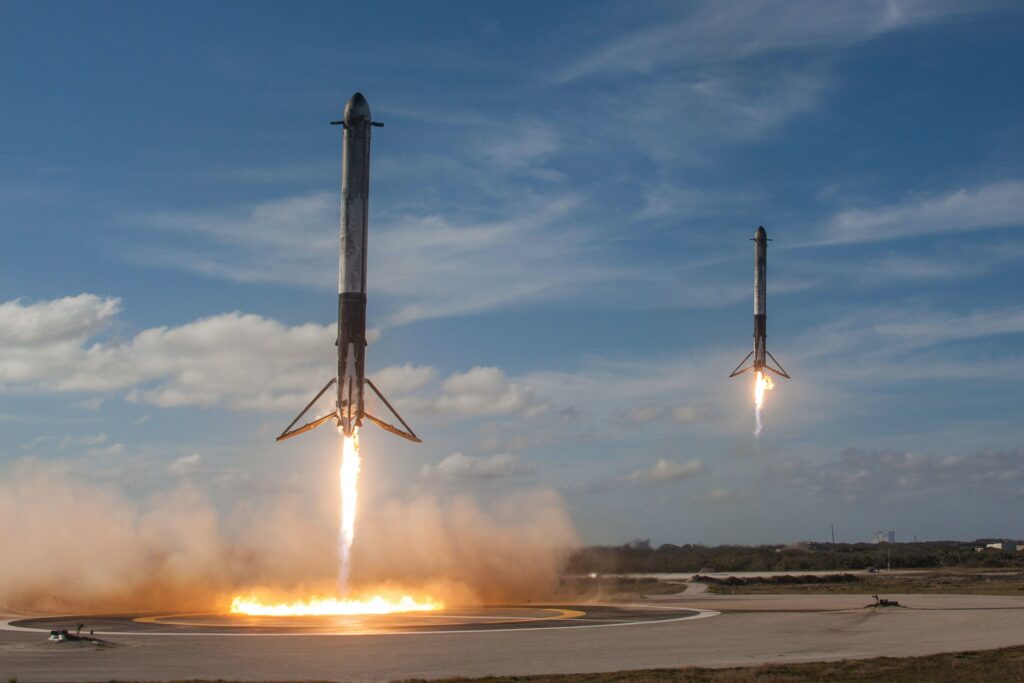
By Sabine Pongruber
Being part of a growing economy is where you want to be these days. And Space promises to be among one of the fastest growing sectors, with huge spillover potential into other industries.
Currently, the space economy has been estimated to be at around 386 billion USD in revenue, and expectations predict it to be at 1 trillion USD by 2040. The outlook is attractive and moving within the space sector one could have the impression of booming space businesses. But are those numbers legitimate?
According to several financial reports published in 2022 and market analysis on the space industry (Bryce Tech, CITI GPS, Deloitte, just to name a few), the space sector will continue to grow. The European Space Policy Institute (ESPI) published the investment capital figures for new space in 2021 proving that capital inflows are supporting assumed growth predictions.
However, as an economist, I am used to looking at the big picture. And as a management consultant, I know the devil is in the details. So, let´s get to the bottom of financial estimates: where do these numbers come from? Which specific subfields are the drivers? And will the predicted 1 trillion USD of revenue be achievable in less than 20 years?
Who dropped the 1 trillion USD figure first?
Morgan Stanley, back in its 2017 report “Space: Investment Implications of the Final Frontier”, was among the first to predict a 1.1 trillion USD market by 2040 with an annual growth rate of 5%. This data is backed up by figures established by the Satellite Industry Association (SIA). The U.S. Chamber of Commerce stated a similar range. The UBS bank remained a little conservative on its approach and stayed just shy of 1 trillion (926 billion USD to be precise) by 2040. At the same time, Goldman Sachs Equity Research predicted a multi-trillion market, and only one year later, in 2018, Bank of America Meryl Lynch released a press statement predicting a 2.7 trillion market within 30 years. In 2020 the US Institute for Defense Analyses in its “Projections for the Future Size of the Space Economy” provided an overall view of the space economy summarizing all published numbers. The figures have only slightly changed ever since, and 1 trillion has prevailed to be the widely accepted achievable yet challenging goal for 2040.
Interestingly, the starting point and baseline for all these predictions were the 2016 space economy dataset figures, collected and analyzed by these same institutions and published in 2017. Noticeably, the numbers showed that back then (2016) the space economy was estimated to be at 340 billion USD (USB, Morgan Stanley, Goldman Sachs, Bank of America), just shy of the total market value of Apple or Aramco today.
If our starting point in 2017 was 340 billion, and with the predicted 5 percent growth rate year-over-year to reach 1 trillion, we should have been at 434 billion USD by 2021 and 456 billion USD by the end of 2022. However, today the space domain is valued at approximately 386 billion USD in global revenue. So, what happened?
Here’s one catch. When Morgan Stanley published and spoke about the “Space Economy”, what they meant was the “Satellite Industry Revenue”, and this becomes clearer once you dig deeper into the report details. It is my guess that all the other reports were built upon this 340 billion revenue figure.
The numbers showed that back then (2016) the space economy was estimated to be at 340 billion USD… today the space domain is valued at approximately 386 billion USD in global revenue.
In 2020 Morgan Stanley changed its initial predictions hinting that the space economy may be bigger than 1 trillion by 2040. This suggests that they probably added to the Satellite Business all the other space-related fields too.
Where are the revenues?

The answer is: we don’t know exactly. To understand where we stand today, we would need to recalculate the 2017 baseline of 340 billion USD and all the subsequent attached numbers, and this turned out to be a challenging task. Due to a lack of references and limited insight into how figures were initially calculated, it is difficult to compare 2017’s predictions with 2022’s actual performance. Not many space companies are publicly traded, which means that insights into generated revenues are limited, and drawing some general conclusions on the overall space economy performance becomes challenging. Furthermore, which companies qualify to be used as an index for measurements? What is the definition of a space company? Does it include someone like Uber, applying satellite downstream data to operate their business, or is it just the manufacturer, launcher, or satellite operators? These are questions and constraints that unfortunately the various reports did not specify, or we, as a space economy, have not ultimately answered.
Not many space companies are publicly traded, which means that insights into generated revenues are limited, and drawing some general conclusions on the overall space economy performance becomes challenging.
A source to determine the general growth rate of the sector is venture capitalists, who publicly share their investment deals. Capital flow is also transparent for institutions such as the European Fund for Strategic Investment (EFSI) and the European Investment Bank (EIB). However, these are investments and not revenues, and revenues are the only data that matters at the end of the day to measure business and economic performances.
Tracing revenues gets even more complicated if we try to follow the military sector. The civil sector does not have insights into how much money governments invest into space technology and how much money they make from selling it to other nations. These numbers will remain an estimate and it’s very unlikely that the public will ever obtain transparency.
The question thus still stands: What is the real annual generated revenue of the space industry? And will we achieve 1 Trillion USD by 2040?
Sources:
Bank of America Merrill Lynch: The space industry will be worth nearly $3 trillion in 30 years, Bank of America predicts, October 2017, https://www.cnbc.com/2017/10/31/the-space-industry-will-be-worth-nearly-3-trillion-in-30-years-bank-of-america-predicts.html
Bryce Tech:Start-Up Space UPDATE ON INVESTMENT IN COMMERCIAL SPACE VENTURES, April 2022, https://brycetech.com/reports/report-documents/Bryce_Start_Up_Space_2022.pdf
CITI GPS: SPACE: The Dawn of a New Age, May 2022, https://icg.citi.com/icghome/what-we-think/citigps/insights/space_20220509
Deloitte: The Commercialization of Low Earth Orbit, Volume 1: the time is now, Spring 2022, https://www2.deloitte.com/content/dam/Deloitte/us/Documents/public-sector/us-gps-the-commercialization-of-leo-vol-1-the-time-is-now.pdf
European Space Policy Institute (ESPI): Space Venture Europe 2021, June 2022, https://www.espi.or.at/reports/space-venture-europe-2021/
Goldman Sachs: Space – The Next investment Frontier, May 2017, https://www.goldmansachs.com/insights/podcasts/episodes/05-22-2017-noah-poponak.html
Morgan Stanley: Space: Investment Implications of the Final Frontier, November 2017, http://commercialspace.pbworks.com/w/file/fetch/128577051/2017-11-01%20Morgan%20Stanley%20Space_%20Investment%20Implications%20of%20the%20Final%20Frontier.pdf
UBS Longer Term Investment: Space, November 2018, https://www.ubs.com/content/dam/WealthManagementAmericas/documents/space-p.pdf
US Institute for Defense Analyses: Projections of the Future Size of the Space Economy, 2020 https://www.jstor.org/stable/pdf/resrep25331.7.pdf
Disclaimer:
The views expressed in this article are those of the author alone. The author or its company´s affiliates are not commercially or financially related of any sort to the companies or institutions mentioned above.

Sabine Pongruber is an Energy industry and manufacturing veteran, who spent 16 years in global leadership roles at General Electric. In 2019 she founded WEME Global, a management consulting company to drive growth for customers by scaling up operations and elevating operational excellence through lean and efficient processes. Since 2022 she is venturing into the space industry, building bridges between established industries and new space. She is based in Salzburg and spends most of her free time in the mountains. That´s the closest you can get to space by yourself, she says.





